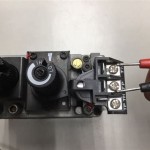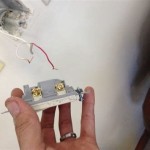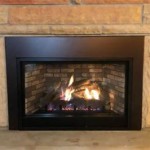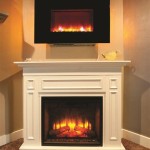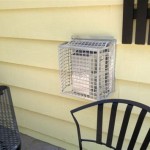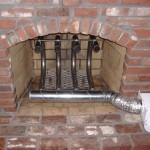Gas Fireplace Inserts in Maryland: A Comprehensive Guide
Maryland homeowners seeking efficient and aesthetically pleasing heating solutions frequently turn to gas fireplace inserts. These inserts offer a convenient and cost-effective alternative to traditional wood-burning fireplaces, providing warmth and ambiance without the inherent drawbacks of wood combustion, such as smoke, ash, and creosote buildup. This article explores the benefits, considerations, and selection process involved in choosing a gas fireplace insert for a Maryland home.
A gas fireplace insert is essentially a self-contained heating unit designed to be installed directly into an existing fireplace opening. Instead of burning wood, these inserts utilize natural gas or propane to generate heat. This combustion process is typically more efficient than burning wood, resulting in lower heating costs and reduced environmental impact. The insert is vented, either directly through the existing chimney or via a direct vent system, ensuring the safe and efficient removal of combustion byproducts.
The popularity of gas fireplace inserts in Maryland stems from a combination of factors, including energy efficiency, ease of use, and the aesthetic appeal they bring to a living space. With Maryland's fluctuating temperatures, a reliable supplemental heating source can significantly reduce reliance on central heating systems, leading to lower energy bills. Furthermore, the availability of various styles and finishes allows homeowners to seamlessly integrate a gas fireplace insert into their existing décor.
Benefits of Gas Fireplace Inserts
Gas fireplace inserts offer a multitude of advantages over traditional wood-burning fireplaces and other heating alternatives. These benefits contribute to their growing popularity among Maryland homeowners.
Increased Energy Efficiency: Compared to traditional wood-burning fireplaces, gas fireplace inserts boast significantly higher energy efficiency ratings. Wood-burning fireplaces often lose a substantial portion of their heat up the chimney. In contrast, gas inserts are designed to maximize heat output and minimize heat loss. Some models can achieve efficiency ratings of 70% or higher, meaning that a greater percentage of the fuel's energy is converted into usable heat for the home. This improved efficiency translates directly into lower heating bills, especially during the colder months in Maryland.
Convenience and Ease of Use: One of the most compelling advantages of gas fireplace inserts is their ease of use. Unlike wood-burning fireplaces, which require the manual loading of wood, starting a fire, and constant tending, gas inserts can be ignited with the push of a button or the flip of a switch. Many models also feature remote controls and programmable thermostats, allowing homeowners to easily adjust the temperature and set schedules for automatic operation. This level of convenience makes gas inserts an ideal heating solution for busy individuals and families.
Reduced Maintenance: Gas fireplace inserts require significantly less maintenance than wood-burning fireplaces. There is no need to purchase, store, and haul wood. Furthermore, there is no ash to clean up after each use. Regular maintenance typically involves an annual inspection and cleaning by a qualified technician to ensure proper operation and ventilation. This reduced maintenance burden frees up homeowners' time and eliminates the mess associated with wood-burning fireplaces.
Enhanced Safety: Gas fireplace inserts are generally safer than wood-burning fireplaces. They are designed with safety features such as automatic shut-off valves that prevent gas leaks and carbon monoxide detectors that alert homeowners to potentially dangerous conditions. The enclosed design also eliminates the risk of sparks or embers escaping into the room, reducing the risk of fire hazards. While it's important to have a professional installation by an experienced installer, gas fireplace inserts offer a higher level of safety compared to open wood-burning options.
Improved Air Quality: Wood-burning fireplaces can release harmful pollutants into the air, both inside and outside the home. These pollutants can contribute to respiratory problems and other health issues. Gas fireplace inserts, on the other hand, burn cleaner, producing fewer emissions. This translates to improved indoor air quality and a reduced impact on the environment. For individuals with allergies or respiratory sensitivities, gas fireplace inserts offer a healthier alternative to wood-burning fireplaces.
Key Considerations When Choosing a Gas Fireplace Insert
Selecting the right gas fireplace insert requires careful consideration of several factors, including the size of the room, the existing fireplace opening, venting options, and desired aesthetic appeal. A thorough assessment of these factors will ensure that the chosen insert meets the homeowner's heating needs and complements the home's décor.
Sizing and Heating Capacity: The size of the room to be heated is a crucial factor in determining the appropriate heating capacity of the gas fireplace insert. Inserts are rated in British Thermal Units (BTUs), which measure the amount of heat they can produce per hour. A larger room will require an insert with a higher BTU rating to effectively heat the space. Consulting with a qualified HVAC professional or fireplace installer can help determine the appropriate BTU rating for a specific room based on its dimensions, insulation, and other factors.
Venting Options: Gas fireplace inserts require proper venting to safely remove combustion byproducts from the home. There are two primary venting options: direct vent and natural vent (chimney vent). Direct vent inserts draw air from outside the home for combustion and exhaust the combustion byproducts through a sealed vent pipe that runs horizontally through an exterior wall or vertically through the roof. Natural vent inserts utilize the existing chimney for venting. The choice between direct vent and natural vent depends on the existing chimney condition, building codes, and homeowner preferences. A thorough inspection of the existing chimney is necessary to determine its suitability for a natural vent insert.
Fuel Type: Natural Gas vs. Propane: Gas fireplace inserts can be fueled by either natural gas or propane. Natural gas is typically the more cost-effective option if it is already available in the home. Propane, on the other hand, requires the installation of a propane tank and can be more expensive than natural gas. The choice between natural gas and propane depends on the availability of natural gas, the cost of propane, and homeowner preferences. Converting an insert from one fuel type to another is possible in some cases, but it typically requires a conversion kit and professional installation.
Aesthetic Appeal and Style: Gas fireplace inserts are available in a wide range of styles and finishes to complement any décor. From traditional log sets to contemporary glass media, there are options to suit every taste. The fireplace surround, which is the decorative trim around the insert, can also be customized to match the existing fireplace mantel or the overall style of the room. Considering the aesthetic appeal of the insert is important to ensure that it enhances the beauty and ambiance of the living space.
Features and Accessories: Many gas fireplace inserts come with a variety of features and accessories, such as remote controls, programmable thermostats, blowers, and decorative accents. Remote controls and programmable thermostats offer added convenience and allow homeowners to easily adjust the temperature and set schedules for automatic operation. Blowers help to circulate the heat more evenly throughout the room. Decorative accents, such as logs, stones, or glass media, can enhance the aesthetic appeal of the insert. Considering the available features and accessories can help homeowners choose an insert that meets their specific needs and preferences.
Installation and Maintenance of Gas Fireplace Inserts in Maryland
The proper installation and maintenance of a gas fireplace insert are essential for ensuring its safe and efficient operation. Hiring a qualified and licensed installer is crucial for a successful installation. Regular maintenance, including annual inspections and cleanings, will help to prolong the life of the insert and prevent potential problems.
Professional Installation: Installing a gas fireplace insert is a complex process that requires specialized knowledge and skills. It is essential to hire a qualified and licensed installer who has experience with gas appliance installations and venting systems. A professional installer will ensure that the insert is properly sized, vented, and connected to the gas supply. They will also ensure that the installation complies with all applicable building codes and safety regulations. Attempting to install a gas fireplace insert without the necessary expertise can be dangerous and may void the manufacturer's warranty.
Permitting and Inspections: In many jurisdictions in Maryland, a permit is required for the installation of a gas fireplace insert. The permit process ensures that the installation complies with local building codes and safety regulations. After the installation is complete, a building inspector will typically inspect the work to ensure that it meets all requirements. Obtaining the necessary permits and inspections is essential for ensuring the safety and legality of the installation.
Regular Maintenance: Regular maintenance is crucial for ensuring the safe and efficient operation of a gas fireplace insert. The manufacturer's instructions should be followed for routine maintenance tasks, such as cleaning the glass door and inspecting the burner. It is also recommended to schedule an annual inspection and cleaning by a qualified technician. During the inspection, the technician will check the gas connections, venting system, and burner components to ensure that they are in good working order. They will also clean the insert to remove any dust or debris that may have accumulated. Regular maintenance can help to prevent potential problems and prolong the life of the insert.
Safety Precautions: It is important to take certain safety precautions when operating a gas fireplace insert. Never block the vents or openings of the insert, as this can impede the flow of air and cause overheating. Avoid storing flammable materials near the insert. Install carbon monoxide detectors in the home to alert occupants to potentially dangerous conditions. If you smell gas, immediately shut off the gas supply and contact a qualified technician. Following these safety precautions can help to prevent accidents and ensure the safe operation of the insert.
By understanding the benefits, considerations, and installation requirements of gas fireplace inserts, Maryland homeowners can make informed decisions about their heating needs and create a warm and inviting ambiance in their homes. Choosing the right insert and ensuring its proper installation and maintenance will provide years of reliable and efficient heating.

Gas Stoves Fireplaces Inserts Installations Columbia Md

Westminster Md Gas Fireplace Wood Stoves Zc Insert

Ex35 Gas Fireplace Insert By Enviro Cumberland Md Ebyland Llc

Gas Fireplace Insert S Expert Installation

Fireplace Insert Stoves Wood Gas Pellet Traditional Baltimore Maryland

A More Realistic Gas Fireplace Deep Creek

Gas Fireplace Inserts In The Gaithersburg Md Area Services

Hearth Home Fireplace Insert Stoves Wood Gas Pellet Baltimore Md

Gas Inserts For Visit Our Showroom In Pasadena Md

Gas Fireplace Installs Frederick Md Wood Buring Installations

